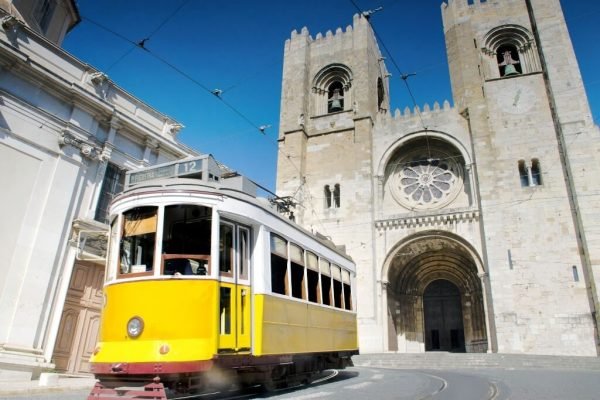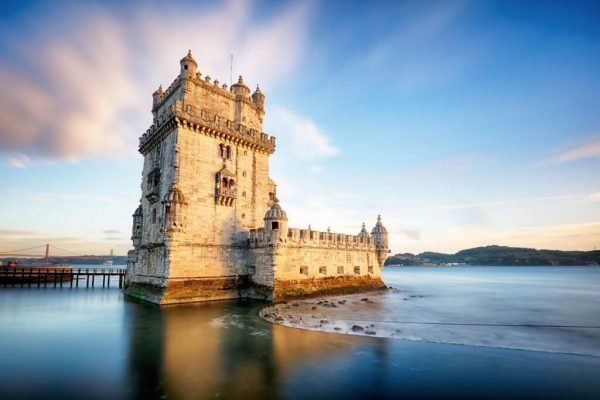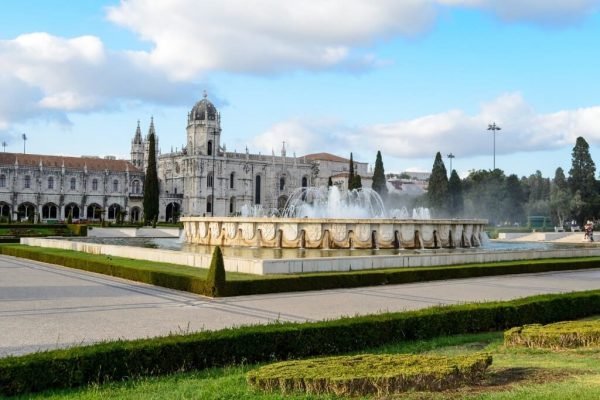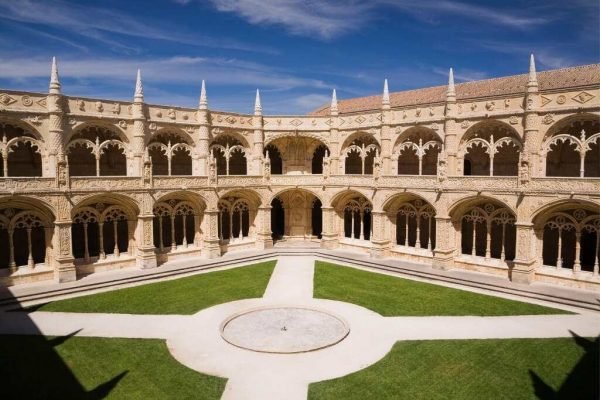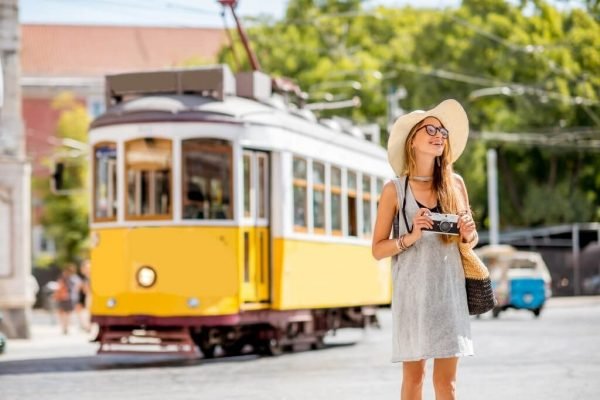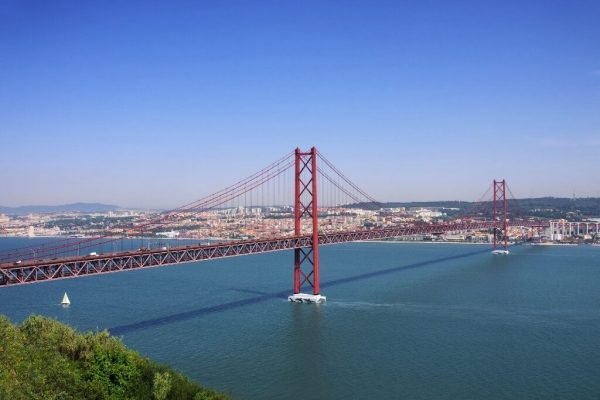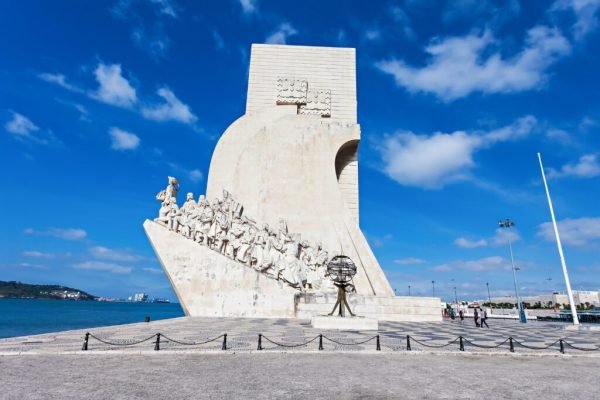Coach Tour through Portugal with Pepe Tours
PEPE TOURS
Coach Tour through Portugal with Pepe Tours
PEPE TOURS
Algarve & Lisbon 5 days tour
Escorted coach holiday from Spain with English speaking guides to discover the highlights of southern Portugal. We will visit the region of Algarve, with its breath-taking landscapes, then travel to Lisbon to visit the capital of Portugal and its surroundings (Sintra, Cascais & Estoril).
Departure days
Departures: on request
The tour to Portugal includes:
– Travel Insurance
– Transportation by bus with air-conditioning, video, reclining seats etc.
– 4 nights in 4-star hotels based on half board (breakfast and dinner)
– English speaking tour guide
– Visits with local guides
Itinerary of the coach holiday to Algarve and Lisbon:
Day 1.
Departure from our terminal. We travel along Seville until we reach Faro (Portugal), the capital of the Algarve. We arrive at the hotel and check-in. In the afternoon we go on a sightseeing tour (accompanied by a local guide) including a walk through the Old Town and a visit to the Iglesia de Oro (the Golden Church). Dinner and overnight stay in the hotel.
Day 2.
After breakfast we set off for Lisbon. We reach Lisbon by travelling across the Vasco da Gama Bridge which is the longest bridge in Europe (more than 17 km long). We arrive at the hotel and check-in. In the afternoon we go on a sightseeing tour with a local guide and visit the district of Alfama, the Tower of Belem and the Monastery of Jeronimos. Dinner and overnight stay.
Day 3.
After breakfast we go on a half day excursion through Lisbon’s surrounding area and visit the villages of Sintra, Cascais and Estoril. We then spend the afternoon at leisure. Dinner and overnight stay in the hotel.
Day 4.
After breakfast we drive towards Almada along the ‘25th of April Bridge’ which is the longest suspension bridge in Europe. We visit the famous Sanctuary of Cristo Rey, situated at a strategic viewpoint giving us the best view of the river Tagus and the city of Lisbon. We continue towards Tavira, also known as the Venice of the Algarve. After a sightseeing tour on the bus, we visit to Old Town. We arrive at the hotel in the afternoon. Dinner and overnight stay.
Day 5.
After breakfast we start the return trip to our terminal. Arrival and the end of our service.
Information about destination:
There’s always a reason to visit PORTUGAL regardless of the season, length or reason for the trip. Travelling through Portugal you can enjoy landscapes, cities, coasts, villages, forests and mountains, Portugal has it all. It’s a small country but is extremely diverse: from green valleys and high mountain ranges in the north to warm welcoming beaches, vast estates with olive and oak trees in the south. Our visit allows us to: spend leisurely time in the hidden countryside, discover the historical streets of Lisbon, make an escape to Evora, wander through the rocky Serra da Estrela and enjoy a bottle of the prestigious Port wine.
The south coast of Portugal is a favourite holiday destination for tourists and has beautiful beaches and good sports facilities. Here the water is warmer and calmer (characterising the Algarve) and the region extends from the border to the Cabo San Vicente. In 1755 Faro, the capital of the Algarve, was destroyed by an earthquake and only a few remnants of the old town are left. Lagos has historical shipyards. Sagres has a 17thcentury fortress and is also the industrial centre for lobster fishing. Cabo San Vicente is the most south-western point of the European continent.
Lisbon (Portugal’s capital) is situated on the bank of the river Tagus which flows into the Atlantic Ocean. It’s one of the few European capitals with a river and sea. The Praça do Comércio (commerce square) looks out onto the Tagus estuary. Lisbon is the oldest city in Western Europe and therefore has a long history of receiving many visitors, culminating with the period of the Discovery voyages. This is why many beautiful ‘manuelino’ (late Gothic) monuments can be found in and around Lisbon, like the Tower of Belem and the Monastery of Jeronimos. Not to be forgotten are the picturesque medieval districts of Alfama and Moreira, crowned with the Castle which, together with the Barrio Alto opposite, merge together in the Baixa Pombalina (Pombaline lower town).
The Tower of Belem, in manuelino style, was built between 1515 and 1519 and is the work of Francisco de Arruda. In 1983 UNESCO declared it a World Heritage Site. The tower is situated at the mouth of the river Tagus its initial purpose was to defend the city. Later the tower was converted into a Customs Office and lighthouse.
The Monastery of Jeronimos (it’s Porguguese name being Mosteiro dos Jeronimos) is close to the Tower; these two sites are the most important in Lisbon. In 1983 Unesco declared the Monastery a World Heritage Site. Designed by the architect Diogo de Boitaca, its construction started on 6th January 1501 and finished at the end of the 16th century. The predominant style is the manuelino style (a richly ornate architectural design) and it was built to celebrate the return of Vasco da Gama from the Indies. There’s a story about where the monastery is situated – on the spot where the Ermida do Restelo (Hermitage of Restelo) stood which is the church where Vasco da Gama and his men spent the night in prayer before departing on their expedition to the Orient in 1497.
Close by is the Padrão dos Descobrimentos (Monument to the Discoveries) which is 52 meters high and was founded in 1960 to celebrate the 500th birthday of one of Portugal’s most important explorers, Prince Henry the Navigator, the discoverer of Madeira, the Azores and Cape Verde. The monument comprises a group of sculptures which form the bow of a caravel (sailing ship). The principal statue is of Henry the Navigator and on either side of the ramps are 33 historical figures who played a part in the great discoveries of Portugal.
The 25th of April Bridge is the longest suspension bridge in Europe, measuring 2,277 metres long. The bridge consists of two levels, the upper level for vehicles and the lower level (added in 1999) for trains. After a construction period of 45 months the bridge was opened for traffic on 6thAugust 1966 and was named the Salazar Bridge. After the Carnation Revolution of 25th April 1974, the bridge received its current name. The bridge was built by the same company that built the Golden Gate Bridge in San Francisco (the American Bridge Company) and for this reason a comparison between the two bridges is often made.
The Vasco da Gama Bridge is the longest bridge in Europe with a total length of 17.2 km. It was built because of the Universal Exposition of 1998 (Expo ’98). On foggy days it’s impossible to see the other side because of its length. The Bridge was opened in 1998 and was named after Vasco da Gama, the most important Portuguese navigator. It commemorates the 500 years since Vasco da Gama’s arrival at the Indies in 1498. The construction of this bridge became more and more important as an alternative to the 25th of April Bridge which was until then the only way to travel from south to north Portugal. It took 3,300 workers and 18 months to complete its construction.
As we walk through the streets of Tavira we’re witness to the various periods of history that have determined the landscape and culture of this city. At the heart of the historical centre (Vila-a-Dentro) we encounter evidence of the origins of the city. Within only a couple of hundred metres we find remains from its ancient history such as the ritual pits and Phoenician and Islamic walls, towers of adobe, an ‘almohade’ district, gothic period gates with pointed arches, features from the Renaissance (like the Iglesia da Misericordia) and buildings in baroque style.
Tavira is proud of its past. It has an extensive religious legacy, an important array of landscapes (from the mountains to the little islands, from the chasms to the river Gilao and the Ria Formosa) and its own style of gastronomy. Visiting Tavira is without doubt a superb cultural experience.
Please note that
* Pepe Tours reserves the right to alter and modify the itinerary and the order of the excursions for organizational reasons.. Depending on hotel availability or in case of last-minute bookings, Pepe Tours may replace the scheduled hotels by others of the same category (see list of scheduled hotels in this link).

